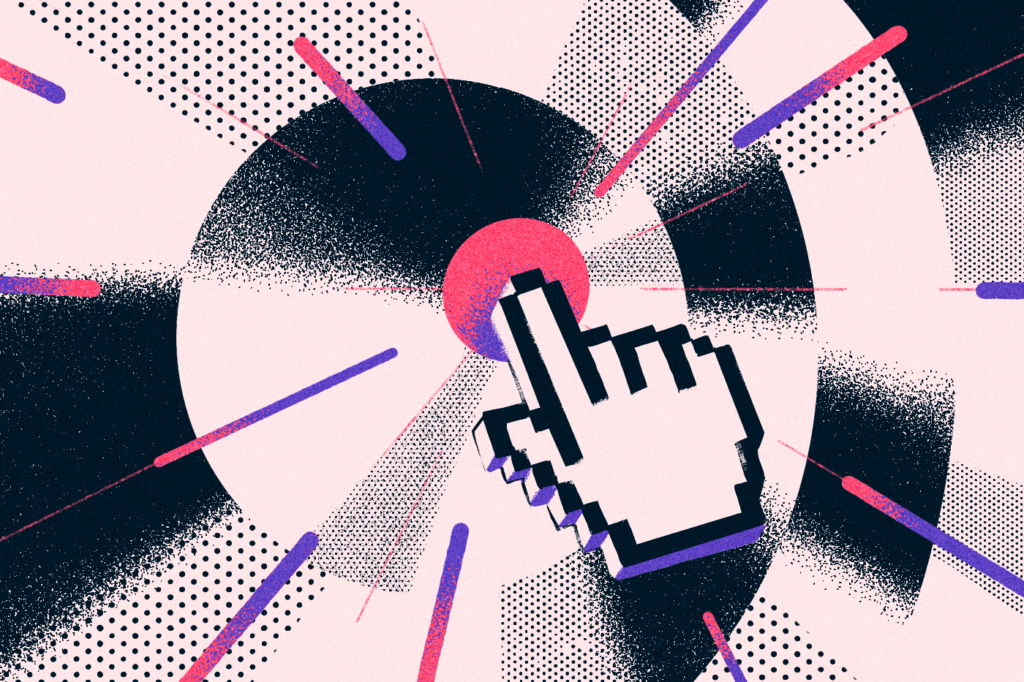Your Guide to Programmatic Advertising in 2024
So far in 2024 the ad industry has had to be on its toes. TikTok’s potential end shines a big light on privacy and data protection, while Google’s cookie conundrum increases the need for advertisers to prioritize their first party data.
Is it all bad? Of course not. We’re seeing some trends coming in hot like Contextual advertising, AI being used in many different scenarios as well as CTV gaining more and more eyeballs. But one trend that continues to deliver is Programmatic Advertising.

From anticipating the growth of AI to relying on contextual targeting, here’s how we expect programmatic advertising in 2024 will recalibrate the digital advertising landscape.
- What are Programmatic Display Ads
- Benefits of Programmatic
- Planning for Omnichannel
- Executing a Programmatic Omnichannel Strategy
- Advantages & Disadvantages of New Data
- Staying Agile with Cordelia Labs
What are Programmatic Display Ads
Programmatic display ads represent a modern approach to digital advertising that leverages automated technology to target specific audiences across the web. Unlike traditional display advertising, which often involves negotiating ad placements directly with publishers, programmatic display ads utilize algorithms and real-time bidding systems to buy ad space in milliseconds. This method allows advertisers to reach their desired audience segments more efficiently and effectively.
At the core of programmatic display advertising is data-driven targeting. Advertisers can use various data points, such as demographics, browsing behavior, and interests, to identify and reach their ideal audience segments. This granular level of targeting enables advertisers to deliver highly relevant ads to users who are more likely to engage with them, ultimately maximizing the return on investment (ROI) of their advertising campaigns.
Real-time bidding (RTB) is a key component of programmatic display advertising. In RTB auctions, advertisers bid on ad impressions in real-time based on the value they place on reaching a particular audience segment. Advertisers can set parameters such as bid price, audience targeting criteria, and budget constraints to ensure their ads are displayed to the most relevant audience within their desired budget.
Programmatic display ads offer advertisers greater transparency and control over their campaigns. Through real-time analytics and reporting, advertisers can monitor the performance of their ads in real-time, allowing them to optimize campaigns on the fly. Additionally, programmatic advertising platforms often provide advanced targeting and optimization tools, such as dynamic creative optimization (DCO), which automatically adjusts ad creative based on user behavior, further enhancing campaign effectiveness.
Benefits of Programmatic
Programmatic advertising is nothing new. In 2023, total programmatic spend reached an estimated $558 billion and is predicted to continue to grow over $600 billion by 2026. The US remains the leading programmatic advertising spender, but marketers from countries such as China and the UK are catching up.
Programmatic advertising consists of relying on algorithmic software to buy and sell digital media placements. Traditionally, advertisers would build proposals, request quotes, and seek negotiations to purchase media. However, with programmatic, marketers can digitally automate the media buying process that typically results in greater return. Computers use data to decide which ads to buy and how much to bid often in real time.
To successfully approach programmatic advertising in 2024, advertisers must also understand the benefit of omnichannel marketing.
Planning for Omnichannel
Omnichannel marketing unifies various digital channels to create a consistent and memorable brand experience. Taking advantage of omnichannel marketing is essential in today’s digital world.
For example, the average household is equipped with 20.2 connected devices. Advertisers must execute a seamless advertising experience across all of them at the right time, in the right place, and with the right technology. It doesn’t stop there, though. They must do all of this with less time to win the average consumer’s attention.
Omnichannel refers to the dispersion of cohesive messages through multiple channels. One of the many benefits of programmatic advertising is that it’s used as an omnichannel marketing tool. Programmatic links digital platforms so it can relay the right message to the right audience. By leveraging the benefits of programmatic, strategists can create a holistic experience that increases consumer loyalty and drives more profitable outcomes in 2024.
Executing a Programmatic Omnichannel Strategy – The power of Sight, Sound and Motion
Advertisers must nail down paid media fundamentals to plan for omnichannel marketing accordingly. Proper execution has never been more critical.
With the rapid rise of digital and mobile channels, omnichannel marketing has become a modern necessity. Therefore, it requires a healthy understanding of paid media basics and its best practices. Life happens, and deadlines get delayed. Creative assets must undergo additional revisions. Decision-makers change their minds, and objectives become vague. This leaves room for error.
An omnichannel marketing strategy will be unsuccessful without a solid understanding of the landscape. Our team’s motto this year is to implement flawlessly. To ensure flawless implementation, you must understand those basics such as which channels to use, what data is available to target the right customers, and how to measure results. Knowing this information will provide a better and more successful omnichannel programmatic strategy.

Programmatic in TV
Streaming subscriptions irreversibly changed the TV landscape. Market researchers predict that 2023 was the first year households with only streaming subscriptions will outnumber households that prefer satellite or cable, with no signs of slowing down.. Alongside that change, programmatic video ads will see an increase.
As streaming subscriptions become more popular, advertisers are leveraging programmatic video ads to reach potential consumers. These ads are quickly becoming the preferred delivery method as marketers prepare to shift away from using third-party data. As more streaming services become available, programmatic ads on TV are only expected to grow in 2024.
Investing in video is expensive. The alternative to forego video may sound appealing to your budget. However, while planning an omnichannel marketing strategy, including video may be critical to your brand’s ROI. Almost half of programmatic advertising uses video. With a significant percentage of all digital video ads transacting programmatically, it’s fair to say if you’re not preparing a video strategy, you’re behind.
Increase in Digital Audio
Similar to traditional TV, the digital landscape has also reshaped radio. More familiar names to call digital audio might be podcasts or music streaming services like Spotify and Pandora. Market researchers have found that podcasts account for one – third of the time of word audio in 2023. Moreover, music streaming increased by 28% from only three years ago.
Visual oversaturation remains a top concern to digital experts leading to some serious untapped digital audio potential. While often overlooked, it has the power to create an engaging experience for users through sound and music.
Programmatic audio advertising is an influential way to build an emotional connection with users. By producing auditory advertisements rather than visual ones, marketers can create unique and immersive experiences.
Plan around visual overstimulation accordingly by incorporating programmatic audio in your strategy. You can reach the same programmatic audiences that will keep coming back for more.
Digital Out-of-Home (DOOH)
As technology paces faster and faster, we’ll continue to see more traditional advertising take on a digital spin. Televisions themselves aren’t going anywhere, and neither is listening to music. Likewise, out-of-home (OOH) advertising is following suit.
Have you seen Time Square recently? Then you’re familiar with digital out-of-home. DOOH uses digital screens to deliver advertising content to spectators. The difference between OOH and DOOH is more accessibility by using digital technology as a tool. Instead of static signs and billboards, DOOH offers more dynamic visuals that can be updated remotely and instantly. With brighter screens, animated visuals, and multiple ads to circulate, it’s difficult not to see the benefit over traditional OOH.
Investing in programmatic DOOH will give your omnichannel strategy more flexibility. While you will begin to see better access to premium digital billboards with high impact displays, you also will have access to the overall benefits of programmatic. Even with DOOH, computers can automate the sale and delivery of the premium content the same way they would with programmatic audio or display. The only setback is behavioral targeting will more limited. So supercharge your omnichannel strategy by making the most of programmatic DOOH.
Advantages & Disadvantages of New Data
Phasing Out Third Party Cookies & New Privacy Laws
Phasing out third party cookies will undoubtedly affect programmatic advertising. In 2024, Google plans to scrap the method for advertisers to obtain data via a third party. Its removal will make it more difficult to track the online activity of potential consumers, impacting powerful tactics such as remarketing.
Google plans to make this change so they can appease audience concerns which negatively impact their brand. Internet users feel violated in that the tech giant is exploiting their personal data. In recent years, other tech companies have listened to consumers and have made changes of their own. Apple, for example, limited in-app tracking as part of their iOS 14 update.
Third-party data has historically assisted programmatic strategies by targeting people based on the data they obtain and analyze. Examples of user data can range from age and key interests to website behavior and search history. This change will have monumental ramifications to the advertising industry and has many people asking, “What’s next?” While the industry braces for the shift, marketers remain searching for a replacement method that encompasses similar targeting reach, effectiveness, and cost-efficiency.

Rise of Contextual Targeting
As Google forces companies to comply with stricter privacy regulations, we predict the rise of contextual targeting in 2023 and beyond. Contextual targeting consists of targeting pages of content instead of direct user interests or demographics. Additionally, many programmatic campaigns already use contextual targeting.
Powerful contextual targeting software has the potential to revolutionize the way advertisers target consumers. By using AI tools that make judgments on a web page’s content, marketers can reach interested users just as likely as using third party data. Big tech has most likely already developed several contextual targeting prototypes meant to replace cookies.
While planning your future strategies, know there’s still room for creative campaigns and more personalized messaging. Even though the shift in the way ads are served is likely to have a profound impact on the digital marketing landscape, marketers have opportunities to make predictions, test new targeting capabilities, and thus stay ahead of the game.
Reliance on AI and Automation
For years, every trendy tech article has mentioned AI. Unfortunately, we’re jumping on the bandwagon. With the imminent rise of contextual targeting and new, powerful tools, programmatic advertising will continue to rely on AI and automation. However, it will in a couple of different ways:
- Automated bidding. Programmatic will continue to use automation. By using algorithmic software to buy and sell online advertising space, it will depend more and more on AI in its sophisticated decision-making process.
- Automated targeting. AI’s ability to analyze behavior will grow. Additionally, marketers will begin to rely on machine-learning to make bigger decisions about consumers.
- Automated ad copy. Several AI technologies have the capability to learn from language and historical data. This makes the ad copy creation process very feasible as long as the data given is valuable. Read more about our thoughts on implementing automated content creation here.
- Automated design. Design has become more labor-intensive than ever, and the approaching recession doesn’t help. Although market researchers expect AI to play a critical role in the creative ecosystem, it’s got a long way to go. Machine-learning has an easier time understanding language and numbers since they follow certain rules, whereas the design process consists of opinions and trends. Furthermore, AI bases much of its work on past design compilations which can violate copyright laws.
Without a doubt, AI technologies have already established their footing in the programmatic advertising world. Automation will continue to transform the way that advertisers and publishers make decisions about their campaigns, as well as provide new opportunities for them to gain insights into consumer behavior.
Stay Agile with Cordelia Labs
While most advertisers dread the collapse of cookies, we’re here for it. Cordelia Labs has always remained a heavy spokesperson for programmatic long before the whispers of nixing third-party data. The right digital strategy in 2024 gets the art of people down to a science. If you’re hesitant about defining new audiences and how to employ the latest tactics to reach them, drop us a line. We’ll help you stay ahead of the curve.
